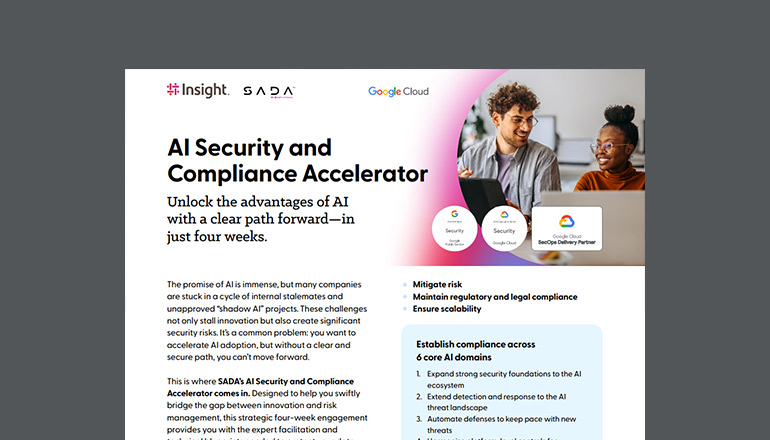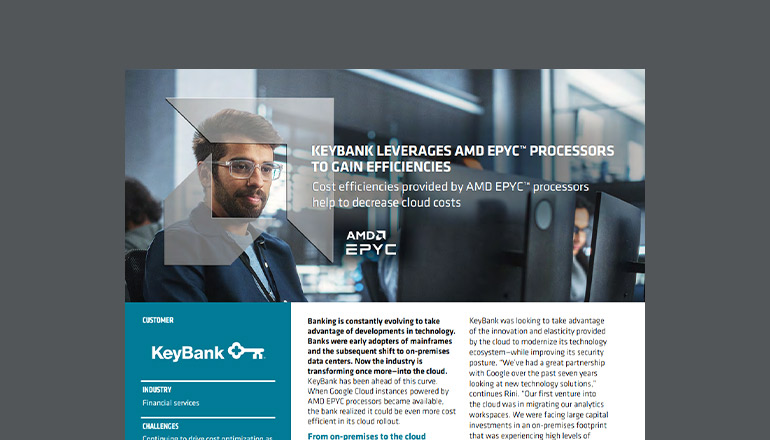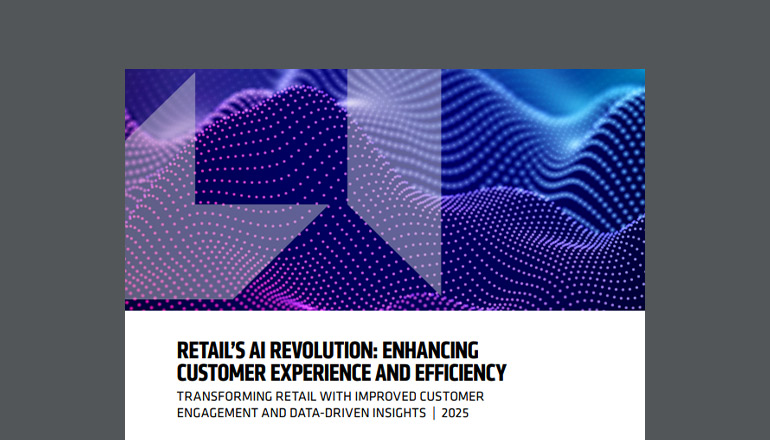Client story Millions in Revenue: AI Recommendation Engine Propels Tech Manufacturer
This global manufacturer is automating product attach and replacement recommendations for big business gains. See how Insight led the transformation from data modernization to machine learning, resulting in $15 million in pipeline revenue — in just eight weeks.
By Insight Editor / 10 Sep 2022 / Topics: Artificial Intelligence (AI) Consulting services Cloud

Facts at a glance
Client industry
Manufacturing
Challenge
Simplify sales awareness and increase revenue related to product attachments.
Solution
A modern data architecture as the foundation for AI — and an ML model to make product recommendations based on historical data
Insight provided:
- Full implementation of Insight LENS — a metadata-driven data ingestion and processing framework
- ML model PoC and build
- Power BI integration with ML model for testing and validation
- Build-out and automation of pipelines for rapid delivery
- Integration of attach recommendations into CRM system and e-commerce website
Insight services:
- Consulting services
Outcomes:
Download the client story
- $15 million increase in revenue pipeline in eight weeks
- $50 million projected increase in annual revenue
- Expanding capabilities to other business units
- Support for viable alternative product recommendations amid chip shortages
The vision: An AI-powered strategy for revenue growth
From smartphones and televisions to industrial machinery, cars and airplanes, a U.S.-based manufacturer and retailer of electronic components provides technology solutions to more than 100,000 clients.
To support a wide range of complex, high-volume custom product design, the company manages more than 100,000 individual SKUs. This requires highly knowledgeable sales and technical designers to identify core components and make recommendations for compatible product attachments or replacements as needed to meet customer requirements.
But relying solely on human-driven processes to execute this level of technical work had created challenges, including long sales cycles and missed opportunities for attach revenue. Leaders within the organization recognized these issues and began looking for ways to supplement these processes with data-driven intelligence.
An intelligent alternative
The client’s senior vice president and staff attended an envisioning session focused on identifying potential applications for Machine Learning (ML) and Artificial Intelligence (AI). Many of the ideas generated in this session involved how AI could help address the challenges of making manual recommendations for compatible product bundles — as well as similar challenges for customers on the web.
An Insight representative was also in attendance at this session, and a conversation began around how Insight could help the company achieve these goals. Over the next few months, Insight client executives and data engineers began working to understand the existing data environment and align on the client’s desired outcomes. The path forward eventually became clear: to develop an ML model that could integrate with both the Customer Relationship Management (CRM) system and the e-commerce site. This would provide embedded product recommendations based on core component compatibility.
But the client’s team quickly realized that before any AI work could begin, they would need to establish a modern data architecture to serve as the foundation.
The strategic path forward
Due to the intricacies of compatibility considerations and the need for historical data to inform the most successful product attachments, data visibility and accuracy would be essential. Years of acquisitions and siloed systems had led to disparate data on products and customer usage that was largely documented through spreadsheets rather than pulled from a unified database.
To ensure the efficacy and scalability of the project, Insight recommended a two-phase approach — an initial phase to establish a single-pane-of-glass view into the client’s data and a second phase to build out the ML model.
A modern data platform for machine learning
Kicking off the first phase, Insight data engineers began the process of locating and collecting the organization’s terabytes of CRM data into a Databricks® Lakehouse architecture. Insight’s proprietary LENS framework was leveraged, providing a scalable, unified platform through which data could be cleansed and transformed for further use.
With this foundation in place, the team then turned their attention to replacing the client’s existing product spreadsheets with real-time visualizations of this data. This not only enabled users to build highly accurate reports around historically successful attachments but also sales trends and market penetration.
Building momentum
With a new Databricks environment, Insight data scientists were equipped to begin phase two of the project. Over the course of eight weeks, a Proof of Concept (PoC) was built out for the ML model. The recommendation engine was integrated with Power BI® to provide preliminary outputs for testing and validation. These were then provided to the client’s technical engineers to ensure the attach recommendations were both logical and aligned to parametric parameters.
After building out and automating pipelines for rapid delivery, further testing and validation was performed with sales teams. These representatives leveraged the data in client conversations — further confirming the value of the solution in creating new opportunities for revenue.
With this critical stage of testing and development complete, the project moved into production. Insight’s data team finalized the solution by integrating attach recommendations into the client’s CRM system and e-commerce website.
The outcome: New revenue, new use cases
With the recommendation engine now up and running, the client experienced significant Return on Investment (ROI). After just eight weeks, the system increased pipeline revenue by $15 million — with a projected annual value of $50 million. Based on this success, the model’s capabilities will be extended to recommend other component attachments — with the long-term goal of encompassing the full product portfolio. Even as external pressures (such as chip shortages) create unprecedented supply constraints, the company is well positioned to provide customers with not only attach recommendations, but also viable alternatives when products are out of stock.
In support of this new use case, Insight will leverage the existing data on component properties and compatibility to identify replacements with similar electrical properties and shorter lead times. This is expected to have a dramatic impact on revenue and customer outcomes in the coming months and years. Beyond the immediate gains, the recommendation engine has demonstrated the viability and value of AI investments throughout the business. With a modern data architecture in place as the foundation for future initiatives, the organization continues its data-driven transformation, unlocking new opportunities for growth and competitive advantage.



